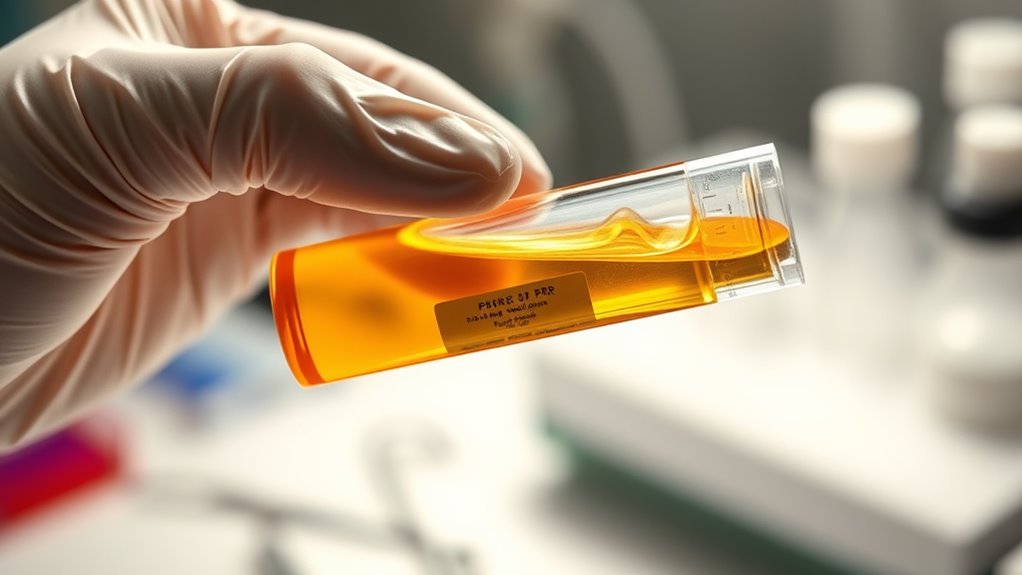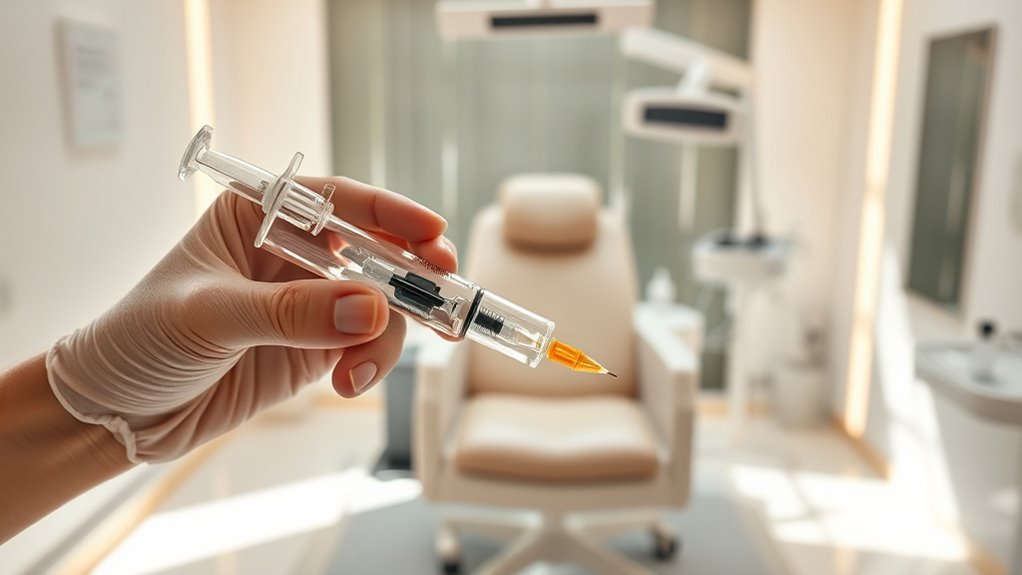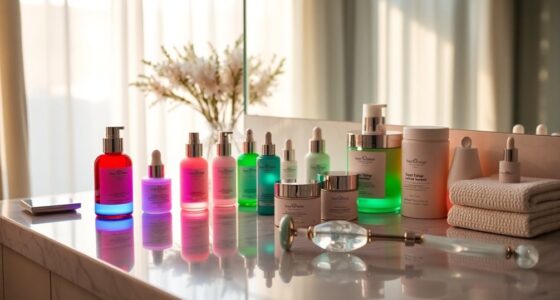Guiding PRF and PRP treatments involves understanding how they harness your body’s natural healing by using platelet-rich concentrates to promote tissue repair and rejuvenation. PRP relies on centrifuging blood to isolate platelets, which then release growth factors upon activation, while PRF forms a fibrin matrix that releases these factors gradually for sustained healing. Proper preparation and skilled providers are essential for effective results. Keep exploring to learn how these treatments could work best for you.
Key Takeaways
- PRF offers a slow, sustained release of growth factors, providing longer-lasting tissue regeneration compared to PRP.
- Proper preparation and activation of blood samples are essential for maximizing treatment efficacy.
- PRF is produced without anticoagulants, forming a fibrin matrix that gradually releases growth factors over time.
- Skilled providers ensure optimal handling, injection techniques, and patient assessment to improve outcomes.
- Overall health, age, and condition influence platelet response and treatment results, highlighting the importance of professional guidance.

Are you curious about how PRF and PRP treatments can boost your healing and rejuvenation? These innovative therapies leverage your body’s natural healing abilities by using platelet-rich concentrates to stimulate tissue repair. When you undergo these treatments, one of the key processes involved is platelet activation. Platelet activation is essential because it triggers the release of growth factors that accelerate healing and tissue regeneration. The more effectively your platelets are activated, the better the treatment’s efficacy. That’s why understanding how PRF and PRP work can help you make informed decisions about your health and aesthetic goals.
PRF and PRP treatments activate platelets to release growth factors, boosting healing and tissue regeneration.
Platelet activation occurs when platelets, which are small blood cells involved in clotting, respond to specific stimuli. In PRP treatments, your blood is drawn and spun in a centrifuge to separate the platelet-rich plasma from other components. This concentrated plasma contains a high number of platelets ready to be activated once injected into targeted areas. Proper activation ensures that the platelets release growth factors promptly, promoting faster healing, collagen production, and tissue regeneration. Conversely, if platelet activation is suboptimal, the treatment’s efficacy diminishes, and you might not achieve the results you’re hoping for.
PRF, or Platelet-Rich Fibrin, takes the process a step further. It’s prepared without anticoagulants, resulting in a fibrin matrix that slowly releases growth factors over time. This sustained release leads to prolonged stimulation of healing processes, often enhancing treatment outcomes. Because PRF relies on natural clotting mechanisms, platelet activation occurs more gradually, which can lead to more consistent and longer-lasting results. This slow, controlled activation is advantageous because it maximizes the regenerative potential of your own platelets, making PRF especially effective for facial rejuvenation, hair restoration, and wound healing.
When considering these treatments, it’s vital to choose a skilled provider who understands how to optimize platelet activation. Proper handling and preparation of blood samples, as well as precise injection techniques, influence the overall treatment efficacy. Additionally, factors like your overall health, age, and the specific condition being treated can impact how well your platelets respond. By working with an experienced specialist, you increase the likelihood that your body’s natural healing power is fully harnessed, leading to more noticeable and longer-lasting results.
Frequently Asked Questions
How Long Do PRF and PRP Treatment Results Typically Last?
The longevity of results from PRF and PRP treatments varies, but you can typically expect their effects to last around 6 to 12 months. Treatment durability depends on factors like your skin type, age, and lifestyle. To maintain ideal results, you might need periodic follow-up sessions. Staying consistent with skincare routines and protecting your skin from sun damage can help prolong the benefits of these regenerative therapies.
Are There Any Age Restrictions for Undergoing PRF or PRP Therapy?
Ironically, age considerations don’t always play the role you’d expect. For PRF and PRP therapy, pediatric eligibility is rarely an issue, as most treatments are suited for adults. Typically, there isn’t a strict age limit, but your doctor will evaluate your overall health and specific needs. If you’re a teenager or older, you’re likely eligible, provided your doctor deems you a suitable candidate, regardless of age.
Can PRF or PRP Treatments Be Combined With Other Procedures?
Yes, you can combine PRF or PRP treatments with other procedures. Many practitioners use combination procedures to maximize treatment synergy, enhancing overall results. For example, pairing PRP with microneedling boosts collagen production more effectively. Always discuss your goals with your provider to guarantee safety and ideal outcomes. Combining treatments can be beneficial, but it’s crucial to have a tailored plan that considers your specific needs and medical history.
What Are the Common Side Effects or Risks Associated With These Treatments?
Think of potential complications like storm clouds on a sunny day. You might experience mild swelling, redness, or pinpoint bruising, which usually fade quickly. Allergic reactions are rare but possible, especially if your body overreacts to the treatment. While serious side effects are uncommon, it’s important to discuss your medical history with your provider. Staying informed helps you enjoy a smoother recovery and minimizes risks.
How Many Sessions Are Usually Needed for Optimal Results?
Typically, you’ll need around 3 to 4 sessions for ideal results with PRF and PRP treatments. The session frequency is usually spaced about 4 to 6 weeks apart, fitting into your treatment timeline comfortably. This schedule allows your body to respond and regenerate effectively. Keep in mind, individual needs vary, so your provider will tailor the number of sessions to best suit your goals and healing process.
Conclusion
Now that you know the basics of PRF and PRP treatments, you’re better prepared to make informed decisions. Did you know that over 1 million PRP procedures are performed worldwide each year? This popularity highlights just how effective and trusted these treatments have become. Whether you’re considering them for hair, skin, or healing, understanding your options guarantees you get the best results. Stay informed and consult with professionals to choose the right treatment for your needs.








